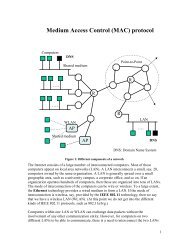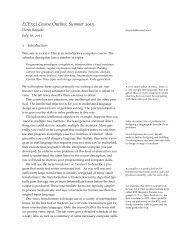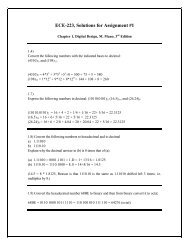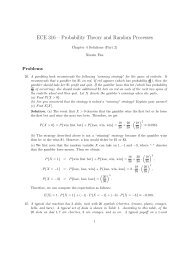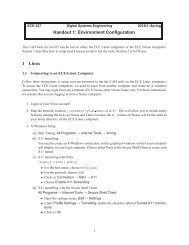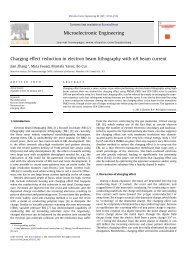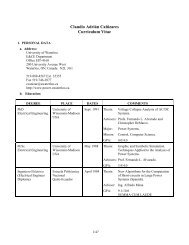Modeling and Simulation of IEEE 14-bus System - Electrical and ...
Modeling and Simulation of IEEE 14-bus System - Electrical and ...
Modeling and Simulation of IEEE 14-bus System - Electrical and ...
Create successful ePaper yourself
Turn your PDF publications into a flip-book with our unique Google optimized e-Paper software.
CHAPTER 1. BLOCK DIAGRAM MODELING 7<br />
V<br />
TR<br />
1<br />
1 + s T<br />
R<br />
+<br />
− +<br />
Σ<br />
V −<br />
FB<br />
VREF<br />
V S (PSS)<br />
1 + s T<br />
1 + s T<br />
s K<br />
F<br />
1 + s T<br />
B<br />
F<br />
C<br />
K A<br />
1 + s T<br />
V<br />
Rmin<br />
V<br />
A<br />
Rmax<br />
+<br />
Σ<br />
VR<br />
−<br />
1<br />
s T<br />
S E+<br />
KE<br />
Figure 1.6: AVR <strong>and</strong> exciter model for synchronous generator.<br />
constant impedance, constant current <strong>and</strong> constant power static load models [7].<br />
Thus,<br />
1. Constant Impedance Load Model (constant Z): A static load model where the<br />
real <strong>and</strong> reactive power is proportional to the square <strong>of</strong> the voltage magnitude.<br />
It is also referred to constant admittance load model.<br />
2. Constant Current Load Model (constant I): A static load model where the<br />
real <strong>and</strong> reactive power is directly proportional to the voltage magnitude.<br />
3. Constant Power Load Model (constant PQ): A static load model where the<br />
real <strong>and</strong> reactive powers have no relation to the voltage magnitude. It is also<br />
referred a constant MVA load model.<br />
All these load models can be described by the following polynomial equations:<br />
a V<br />
P =P0<br />
V0<br />
b (1.2)<br />
V<br />
Q =Q0<br />
V0<br />
E<br />
E<br />
fd



